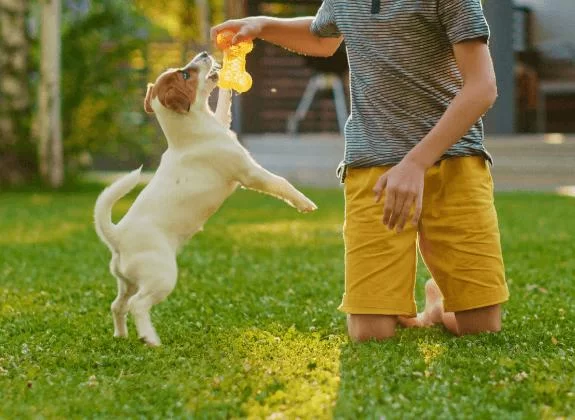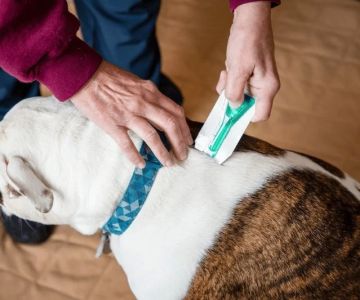- Why Socializing Your Dog with Children Is Essential
- Understanding Dog Behavior Around Children
- Step-by-Step Approach to Socializing Your Dog with Kids
- Common Mistakes to Avoid When Introducing Dogs to Children
- Real-Life Story of Successful Dog-Child Socialization
- Professional Support and Resources for Dog Socialization
1. Why Socializing Your Dog with Children Is Essential
Introducing your dog to children in a positive and controlled manner is critical for the safety and happiness of both your pet and your family. A well-socialized dog tends to be more relaxed, confident, and less likely to react fearfully or aggressively around kids. This creates a foundation for lifelong companionship and joyful interactions.
Children bring energy, unpredictability, and curiosity into the environment, which can sometimes overwhelm a dog not accustomed to them. Proper socialization ensures that your dog learns to interpret children’s behavior correctly and respond calmly.
The Benefits of Early Socialization
Starting socialization early, especially with puppies, helps prevent future behavioral problems and builds trust. However, even adult dogs can benefit from a gradual and thoughtful introduction to children. The goal is to cultivate mutual respect and understanding between your dog and the younger members of your household or community.
2. Understanding Dog Behavior Around Children
Before socializing your dog with children, it’s important to recognize how dogs perceive kids and their actions. Children’s movements are often quick and erratic, which may unintentionally scare or excite a dog.
Common Canine Reactions to Children
Dogs might respond to children in various ways, such as:
- Curiosity and playfulness
- Fear or anxiety if they feel overwhelmed
- Protective behavior, especially around their owner or space
- Stress signals like lip licking, yawning, or retreating
Understanding these signals helps you intervene appropriately and prevents negative interactions from escalating.
3. Step-by-Step Approach to Socializing Your Dog with Kids
Successfully socializing a dog with children requires patience, planning, and gradual exposure. Here is a detailed approach to guide you:
Step 1: Controlled Introduction in a Calm Environment
Begin introductions in a quiet, neutral space without distractions. Keep your dog on a leash and allow the child to observe from a distance. Reward your dog for calm behavior with treats or praise.
Step 2: Teaching Children Proper Behavior
Educate children on how to approach and interact with dogs gently. This includes avoiding sudden movements, not pulling ears or tails, and respecting the dog’s personal space.
Step 3: Short, Positive Interactions
Encourage brief, positive meetings where the dog can safely sniff and explore the child’s presence. Use treats and toys to create a positive association.
Step 4: Gradually Increase Interaction Time and Freedom
As your dog becomes more comfortable, allow supervised play sessions with more freedom. Continue to monitor body language closely and step in if stress signs appear.
Step 5: Reinforce Calm Behavior Consistently
Reward your dog when they remain calm around children. Avoid encouraging overly excited or aggressive play. Consistency from all caregivers is key to lasting success.
4. Common Mistakes to Avoid When Introducing Dogs to Children
Even well-meaning owners sometimes make errors that hinder socialization progress. Avoid these common pitfalls:
Rushing the Process
Forcing interactions too quickly can increase fear or aggression. Always move at your dog’s pace and take breaks as needed.
Ignoring Stress Signals
Pay close attention to subtle signs like yawning, lip licking, or turning away. These signals indicate discomfort and the need for a break.
Allowing Rough Play
Children should be taught that dogs are not toys. Rough handling can hurt or frighten dogs, damaging trust and safety.
5. Real-Life Story of Successful Dog-Child Socialization
Jessica’s story with her rescue dog, Max, illustrates the power of patient socialization. Max was initially anxious around children due to a troubled past. Jessica followed a structured plan of slow introductions, positive reinforcement, and educating her children on respectful behavior.
Over several months, Max transformed into a confident and friendly companion around her kids. Jessica credits the support of professional advice and quality training products, which she sourced from Hidden Brook Veterinary, for helping her achieve these results safely and effectively.
6. Professional Support and Resources for Dog Socialization
Socializing a dog with children can sometimes be challenging, especially with dogs that have had traumatic experiences or strong fears. Hidden Brook Veterinary offers access to experienced trainers, behavioral consultants, and specially curated products designed to support gentle, effective socialization.
Using professional resources can ensure your dog and children build a safe, trusting relationship that lasts a lifetime, giving both you and your family peace of mind.












